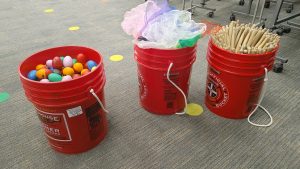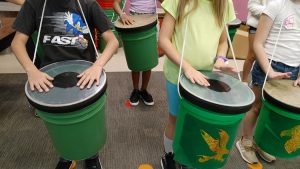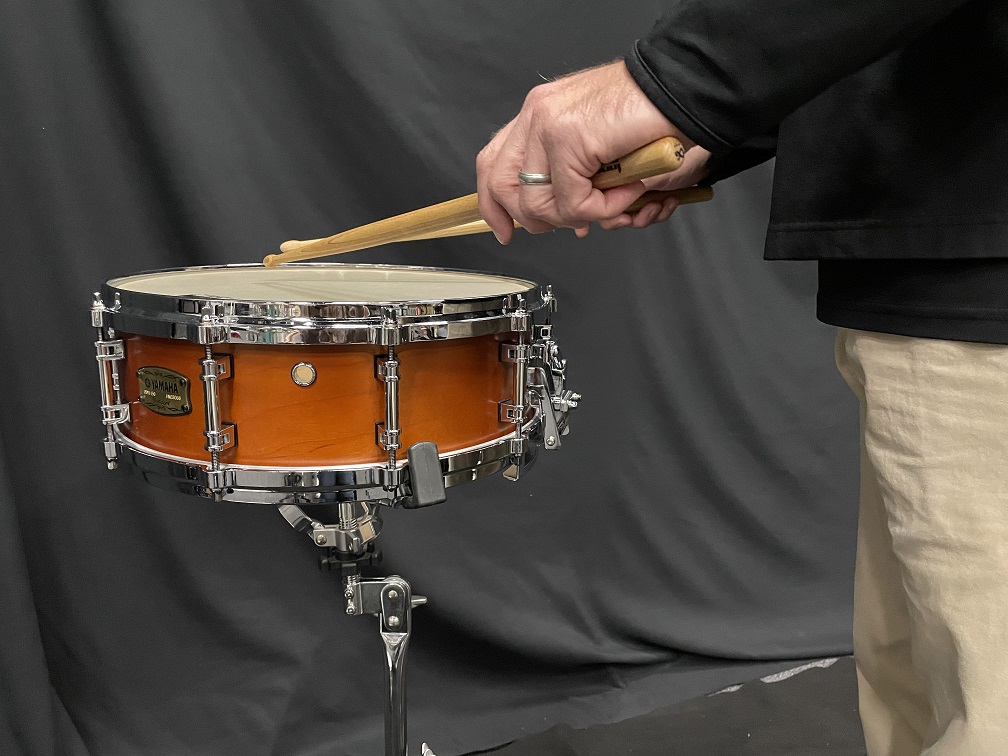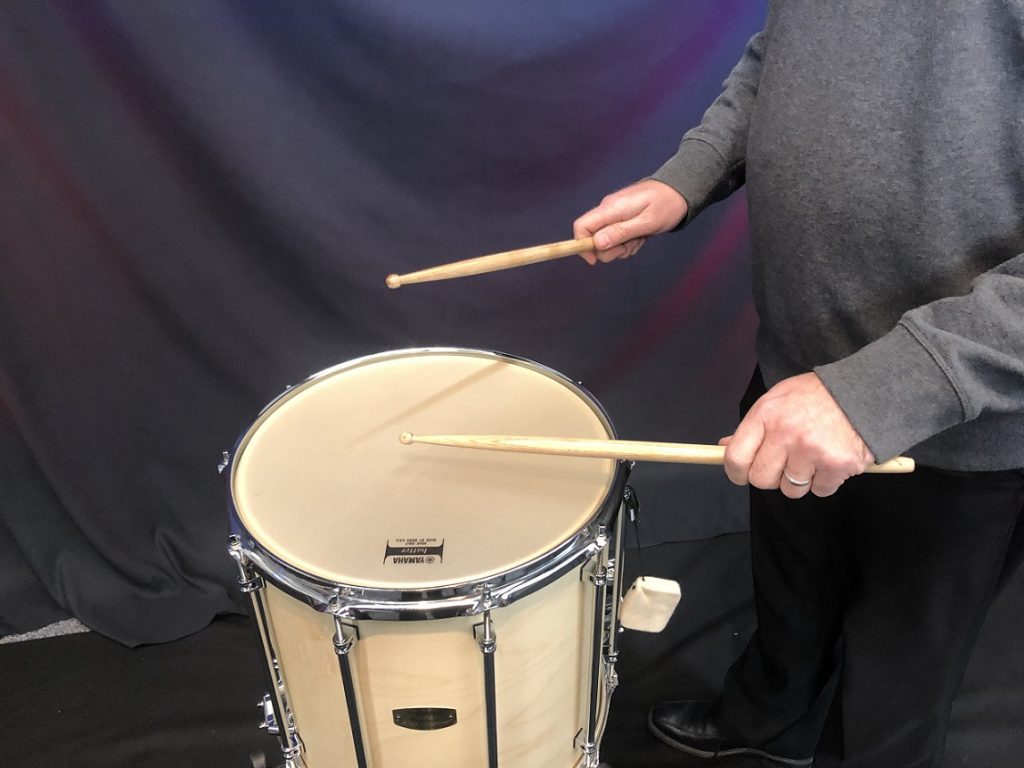Bucket Drumming: An Inexpensive, Durable and Portable Option
Enliven your elementary music classroom with cheap and mobile bucket drums — your students will have fun and learn about percussion, marching and more!
Bucket drumming is a popular trend among busking musicians performing for tips on crowded streets. In my hometown of Las Vegas, bucket drumming can be heard every few blocks down the Las Vegas Strip and Fremont Street.
The artform was created out of necessity because it was a combination of cheap and mobile instruments that can mimic the highs and lows of a drum set. Some of these “found sounds” are hard to distinguish from the real samples used in today’s popular music.
Music teachers have the same demand for inexpensive, storable and relatable instruments in our classroom.
Classic Bucket Drumming
Your buckets and sticks have arrived! What now?
I lead my elementary students in a call and response where they are expected to play the top of the bucket. Once the process feels like it has run its course, introduce playing the side of the bucket. For some students, this will feel like breaking the rules while others may be knocking theirs over with grandiose swings. Playing the top of any percussion instrument has been normalized with hand drums, xylophones and just about everything else in your room. The bucket presents the opportunity to truly find sounds.
A great second activity would be to challenge students to find as many sounds as possible. Top, side and rim will become popular answers, but cheer for the student who lifts the bucket and explores the interior or starts using their hands instead of sticks. After students have had a chance to show-and-tell their discoveries, incorporate the popular sounds into your call and response. Inevitably, a student will introduce a hint of choreography into their playing. Whether it is a large motion or swaying their body, challenge the students to explore what motions feel natural when playing the bucket. Because of height differences, students who can stand and play may jump around or circle the bucket while taller students show off drumming from far away.
The grand finale of your first bucket lesson should combine all the elements that students discovered in your class. Using their playing zones and choreography, craft a short routine that can be memorized in a short amount of time. Repetition is your friend! If students love a pattern, instead of moving on to a new pattern, repeat the same pattern while standing on one foot or facing a different direction.
If the class is proud of their creation, perform for anyone who will listen! Classroom teachers pick up from the music room at my school, which makes a perfect opportunity for a performance assessment and maybe even a photo for the yearbook or monthly newsletter.
Polyphony
Once your students are comfortable with their rhythms and playing zones, add complexity to the lesson by creating two-part patterns. A fun place to start would be singing “Row, Row, Row Your Boat” or any round out loud with the class. Next, have students drum the syllables on the carpet or a soft material. This allows you to monitor any outliers and give direct support to those who need it. Similar to students who are afraid to sing, young musicians might find drumming loudly as a chance for others to judge them. Use precision when judging if a student is choosing to not participate or is cautious about being heard.
Utilize a neutral position like “Sticks down!” or “Shoulder position!” to alert students that it’s time to stop playing. Attempt to sing your round with two groups. This lesson would benefit from a previous understanding of rounds but take the time to make a multi-week lesson plan if you are starting from scratch. Once your preferred level of proficiency is met with singing the round, bring the drum sticks back so students can drum their syllables. Create an arrangement that allows each group a chance to sing and play its part. Group A might be singing while Group B is drumming and vice versa. Add some minimal choreography and you have a stage-ready performance. For teachers who love choreography, create a Group C so that one group is singing, one group is drumming and the third group is moving.
Remo Rhythm Lids
Bucket drumming could stop at polyphony and life would be good, but the Remo Rhythms Lids take the entire activity somewhere special. There are a few different models of the Rhythm Lid, including bright and dark tone, a snare and a sound-sensitive model. If you do any work with students who have sound sensitivity, I implore you to look at the Rhythm Lid Comfort Sound Drumhead. It allows students to strike at high velocity and only create a low, inviting tone. This has been wonderful for my students who have varying muscle control as well.
General music hand drums are priced to last a lifetime. While I am thrilled that they last a lifetime, the entry is sometimes too steep for a music program. Consider how many bucket drums you could create for the cost of one lifetime-quality hand drum. I am a firm believer in a 1:1 ratio of instruments to students, which has led me to fill my room with the snare and dark-tone Rhythm Lids on buckets. Besides being portable and durable, students love that they get their own instrument. The first time that I asked a kindergartener to move a drum was also the last time, but even my smallest student can move a bucket.
The snare Rhythm Lid is impossibly accurate to the snap of a real snare drum at a fraction of the cost and weight, which led me to think about the possibilities of marching.
Marching
I created marching buckets by removing the metal handles and drilling large holes in the same spots. This allowed me to string a cord of the same diameter through the holes as a neck strap. I found that smaller diameter cord and string were too uncomfortable for students to wear around their neck. I even used shredded T-shirt fabric as a buffer between the neck and cord. Because elementary students are forever at different heights, I measured cord for the tallest and shortest students I could find and then made random lengths between those two extremes.
Once students stand with their buckets on, all lessons can be repeated with the intention of walking or marching while playing. As soon as the weather dips below 100 degrees Fahrenheit in Las Vegas, music class goes to the field and performs our rhythm games while walking in a circle or following the leader.
The students’ favorite activity is call and response in a tiny circle. Once we reach a small goal, the students take a step backward, put their drums down and run one rotation around the circle. Eventually, the circle is the size of the field and we can barely hear each other, but we still cheer when it’s time to run the lap. This was also a great activity for testing season because students are eager to get out of the building and stretch their legs.
A more formal marching experience is to memorize an eight-measure pattern and see if students can walk as a group while performing. This is a great time to talk about vamping and watching for a cut-off signal. My after-school instrument club prepared for a parade by learning some three-part patterns that could be played as many times as necessary in a row. We named them fun code words that the students coined like “Boomcha,” which allowed me to cue an ending to the current pattern, yell “Boomcha! 1, 2, ready, go!” and we were set for another block or so.
Alternative Seating and Storage
 Besides all their wonderful musical benefits, buckets have alternate uses that have become standard in my classroom. I phase out damaged performance buckets as storage for boomwhackers, guitar strings, instrument cables and everything else that needs a separate container. My music room has no chairs but with a soft pad, buckets become a tolerable sitting surface for a short amount of time. If you’ve seen the cardio drumming trend then you can imagine how fun it would be to throw a yoga ball into your bucket and drum away!
Besides all their wonderful musical benefits, buckets have alternate uses that have become standard in my classroom. I phase out damaged performance buckets as storage for boomwhackers, guitar strings, instrument cables and everything else that needs a separate container. My music room has no chairs but with a soft pad, buckets become a tolerable sitting surface for a short amount of time. If you’ve seen the cardio drumming trend then you can imagine how fun it would be to throw a yoga ball into your bucket and drum away!
Even if you aren’t excited by the idea of bringing buckets into your classroom, I hope you can see the intention of finding music in unlikely places. I hope there are many more musical solutions that check as many boxes as the inexpensive, durable, portable and useful bucket.

















